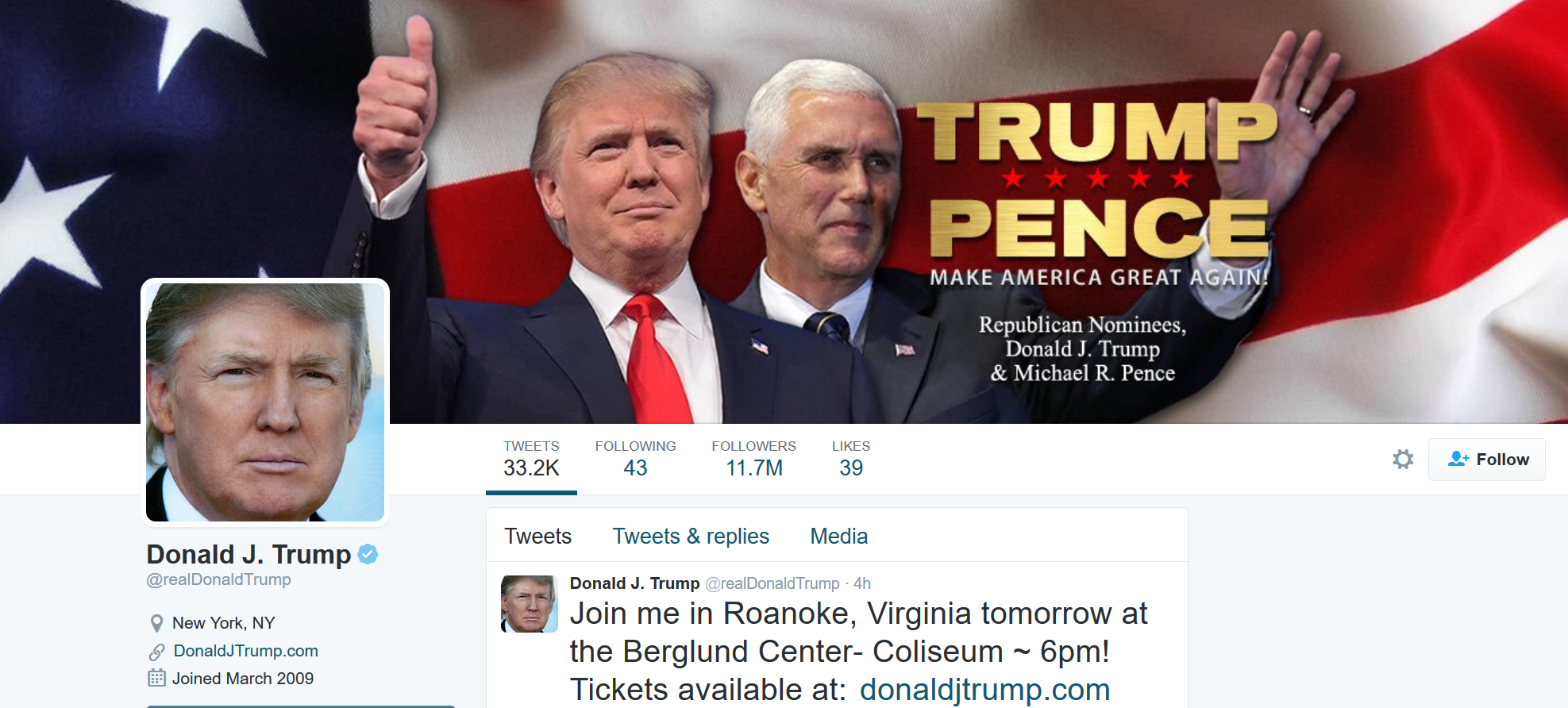Technology may be the key that unlocks the door to the white house
“Technology is now the focus of the campaign, rather than something that supports it,” said Mikah Sellers, Chief Digital Officer for the branding agency Grafik. “The data scientist in these campaigns is going to be as important as the campaign manager.”
Key technologies that are helping to shape the future of the United State include social media, big-data driven targeting and voter registration solutions.
Social media is a key battleground
Social media is driving the 2016 presidential race as both candidates view Facebook, Twitter and Instagram as critical tools for winning the White House. That is because of a growing realisation that the quickest way to make news is to put out a statement or comment in a social media post and avoid paying for ad space.

This focus on social media is not surprising. According to a recent Pew Research Center report, as of July, 24 per cent of US adults say they have turned to the social media posts of Donald Trump or Hillary Clinton for news and information about the election – more than those who turn to either of the candidates’ websites or emails combined (15 per cent). Added to this is the massive reach social media offers the candidates – in the second quarter of 2016, Facebook boosted 1.71 billion monthly active users, for example.
What has become clear this election cycle is the power that social media has to shift the news cycle into a new paradigm.

“This election cycle is the first I’ve seen (where) candidates realise social media is their direct pipeline into mainstream media coverage and to voters,” said Republican political strategist Patrick Ruffini. Today, social media has evolved from afterthought to strategy, he said, thanks largely to Trump’s habitual social-media-first proclamations. Candidates have begun using sites like Twitter and Facebook as a direct and first line of communications to voters.
In addition to providing instant access to polls, important campaign information, candidate viewpoints, Donald Trump’s 11.7 million and Hillary Clinton’s 8.93 million Twitter followers have the opportunity to be part of breaking news before it is picked up by the mainstream news media. And, social media gives the candidates themselves the opportunity to create and control the news narrative by disseminating new messages, giving immediate responses to campaign attacks and engaging with voters in unprecedented ways.
The way that the two parties are using social media is different, however. Writing in INC., Paul Grossinger suggests that Republicans are using media, particularly viral social media, differently than ever before: driving up anger and attention levels to push people who have never voted to the polls. “This aggression-focused approach is very new to Presidential elections, where previous get-out-the-vote focused campaigns focused on Hope (Obama 2008), Compassionate Conservatism (Bush 2000), and Economic Growth (Clinton 1992),” he said.
The power of data-driven targeting

Many believe that what will ultimately make the difference in the outcome of the election is how well each campaign is able to harness and act on social influence, mobile data and customer relationship management (CRM) assets. While the Obama campaign proved the value of big data in 2008, the campaigns today have a new opportunity to use big data algorithms to better target consumers online based on their social interactions across the web and on Facebook. This important social data, along with mobile geolocation data and CRM data is then used to drive display ad campaigns delivered online, via mobile, video and Facebook.
The amount of data available to drive targeting is big. With over 10 billion sharing events taking place each month over social media, big data is being created every second with each like and share. New predictive analytic tools are offering campaigns new ways to sort through this data to identify a host of voter characteristics. This enables campaigns to identify distinct voter groups for more targeted outreach and then provide them with a seamless experience as they move between channels and devices.
Get out the vote
For some, the key to election success is how well the campaigns are able to use technology that drives voter registration. The Democrats are using voter registration and reminder technologies, for example, to encourage voter registration and turnout amongst the critical Latino demographic. And it is paying off. More new Latino voters have registered in the last four years than any previous period, and the New York Times recently predicted that 2016 will be the single highest voter registration year ever for Latinos.

New applications are reminding new voters to register, then, can either handle or dramatically simplify all remaining paperwork and deadlines. These new solutions can also deliver regular election day reminders and tips, which is intended to maintain voter interest and reduce apathy. Voter registration solutions can also cut the time and cost of inputting registration data, reduce data entry errors, ensure citizens can’t vote more than once and make voting faster, easier and more convenient.
While each of these technologies has their own proponents, it will most probably require excellence using all three to make it into the winner’s circle in November.
More like this
How technological innovation in the newsroom impacts The Washington Post’s BrandStudio
Data-driven storytelling: Making sense of facts and figures
The Economist on research, millennials, and big data
How Virtual Reality allows anyone in the world to immerse themselves in the Clinton/Trump race







